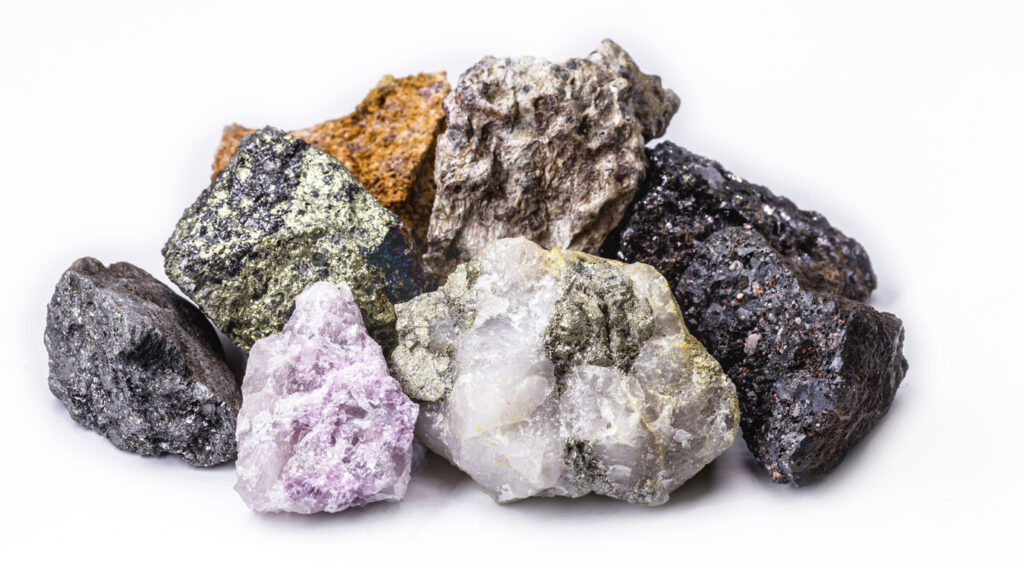Terroir is a concept fundamental to the wine industry. Its significance lies in the intricate relationship between the geography, geology, and climate of a particular location and the resulting impact on wine’s taste and aroma. The word “terroir” has its origins in the French term “terre,” which means land or soil. Encompassing a wide array of factors, terroir is responsible for the unique characteristics that differentiate wines coming from various regions, vineyards, or even different sections within a single vineyard.
Primarily, terroir comprises four main components: climate, soil, topography, and the grape variety itself. While each of these factors play an essential role, it’s their combination that truly defines a wine’s terroir. In essence, terroir reflects how geological and atmospheric conditions shape the expression of grape varieties and, ultimately, influence the quality and style of the wine produced.

Key Takeaways
- Terroir involves the interplay between geography, geology, and climate, affecting the wine’s taste and aroma.
- It is composed of four main components: climate, soil, topography, and the grape variety.
- Terroir contributes to the uniqueness and distinct characteristics of wines from different regions and vineyards.
The Origins and Definition of Terroir
Terroir is a French term that encompasses the unique characteristics of a wine’s geographical location. It is deeply rooted in French winemaking tradition and plays a significant role in determining the quality and distinctiveness of a wine. The concept of terroir has evolved over time, but its relevance in the winemaking industry remains prominent.

The history of terroir dates back to centuries ago when French winemakers began to notice that wines from different regions and vineyards had distinct flavors and characteristics. They attributed these differences to the varying environmental factors that each vineyard experienced. Some of the key elements of terroir include the soil composition, climate, topography, and even the local winemaking traditions of each region.

While there isn’t a precise translation for terroir in English, the term encompasses the unique and complex combination of factors that influence a wine’s taste and aroma. This is an essential aspect for those who appreciate high-quality wines, as it helps them identify the best regions and vineyards to source their wines from. The term terroir has been widely adopted by winemakers worldwide and continues to influence the manner in which they approach viticulture.

In conclusion, terroir is a significant concept representing the unique qualities that a specific geographic location imparts to a wine. With its rich history and strong influence on winemaking practices, terroir continues to be an essential aspect in understanding what makes each wine special and memorable.
Role of Climate in Terroir
Climate plays a significant role in shaping the terroir of a wine region. It influences various factors like temperature, rainfall, and heat retention, all of which directly impact the grapevines’ growth and, ultimately, the characteristics of the wine produced.

In terms of temperature, both warmer and cooler climates result in different grape-growing conditions. Warmer climates, such as those found in Mediterranean or New World regions, tend to produce grapes with higher sugar content, leading to wines with higher alcohol levels and bolder flavors. Conversely, cooler climates, often found in traditional European regions, contribute to grapes with higher acidity levels, resulting in wines with lighter body and more delicate flavors.

Rainfall is another critical aspect of climate in terroir. Adequate rainfall allows grapevines to access the water they need for growth, while too much rainfall can lead to waterlogged soil, risk of fungal diseases, or dilution of grape flavors. On the other hand, too little rainfall can cause drought stress, which may result in smaller berries with concentrated flavors and higher tannins.
Heat retention also plays a significant role in terroir. The area’s topography, such as south-facing slopes or valleys, can influence how much heat is retained in the grape-growing region. Regions with good heat retention can have longer growing seasons and ideal ripening conditions for grapes.

In summary, climate is a vital component of terroir, and nuances in temperature, rainfall, and heat retention can dramatically impact the resulting wine’s flavor profile and characteristics. The interplay of these factors creates unique growing conditions that contribute to a specific wine region’s identity and the taste of its wines.
Significance of Soil Composition
The soil composition in a vineyard plays a vital role in determining the specific characteristics of the wine produced in that region. Soil is a mixture of various elements, and its composition varies from place to place. Some of the significant factors that contribute to soil composition include clay, sand, limestone, chalk, gravel, granite, drainage, fertility, and minerals.

Clay, limestone, and chalk are essential components that contribute greatly to a vineyard’s terroir. Clay-rich soil can retain water, providing adequate moisture to the vines during dry seasons. Limestone, on the other hand, helps in maintaining the soil’s pH balance and provides a steady supply of calcium to the vines. Chalky soil is known for its excellent drainage capabilities, which prevents waterlogging and ensures the vines receive the right amount of water.
In contrast, sandy soil contributes to better drainage due to its loose structure and larger particles. This type of soil dries out quickly and is less fertile compared to other soil types. However, sandy soil can be advantageous in preventing certain vine diseases caused by excessive moisture.

Granite and gravel-based soils are well-draining and can absorb heat, which are needed for some grape varieties to thrive. Both granite and gravel help to moderate the temperature of the soil, promoting even ripening and enhanced grape flavors. Moreover, these soils are low in fertility, which encourages the vines to put down deep roots in pursuit of nutrients and water.

The fertility of the soil is another essential aspect of terroir in wine. In general, less fertile soils yield grapes of higher quality, as the grapevines need to struggle to find the necessary nutrients to grow. As a result, the vine focuses its energy on producing fewer but more concentrated grapes, ultimately leading to more complex and flavorful wines.

Minerals, such as potassium and magnesium, present in the soil are also vital for grapes’ growth and development. These minerals influence the acidity, pH, and flavors in the resulting wine. Furthermore, the soil’s minerals can impact the way a vine absorbs water and nutrients, which subsequently influences the grape’s ripening process.

In summary, soil composition is a crucial factor that shapes the unique characteristics of a wine. The interplay of various soil types, drainage, fertility, and mineral content all contribute to a vineyard’s terroir, ultimately determining the wine’s flavor, aroma, and overall quality. Understanding the significance of soil composition enables winemakers and enthusiasts to better appreciate the nuances of their favorite wines.
Water and Elevation Factors
Water plays a crucial role in the terroir of a vineyard. The availability of water is essential for healthy vine growth and grape production. The soil’s drainage properties impact how much water is retained for the vine’s roots. Soil with good drainage ensures that water does not stagnate around the roots, preventing root rot and allowing the vines to receive a consistent supply of water.

The presence of bodies of water, such as lakes or rivers, can also influence the terroir. These water sources can moderate the climate of a vineyard, stabilizing temperatures and increasing humidity. For example, vines growing near large lakes can benefit from their insulating effect as they regulate temperature fluctuations and minimize the risk of frost damage.
Elevation is another significant factor that affects terroir. Vineyards located at higher altitudes, particularly in mountainous regions, can experience unique microclimates not found in lower regions. As elevation increases, temperature decreases, which can extend the growing season. This extended growing season often results in more complex and concentrated flavors in the grapes.

Furthermore, higher altitudes provide increased exposure to sunlight due to the thinner atmosphere. This sunlight intensity can result in thicker grape skins, which contribute to more robust and richer wines. Additionally, the higher elevation vineyards often have slopes with good natural drainage, preventing excessive water absorption and promoting optimal grape development.

In summary, both water and elevation are essential factors that contribute to the terroir in wine. Appropriate water availability and drainage, as well as the vineyard’s altitude, can significantly impact the resulting flavors and quality of the wine produced. These two factors, alongside climate, soil composition, and other elements, come together to create the unique characteristics found in each individual wine.
Influence of Terroir to Grape Varieties
Terroir is a crucial factor in determining the characteristics of grape varieties. Each unique region possesses its own set of environmental conditions, including land, climate, and soil, all of which contribute to the growth of vines. Grape varieties, in turn, inherit specific traits from the terroir of their vineyards, enabling them to produce distinct wines.

The conditions of a given region can greatly influence the acidity and sugar levels in grapes. For example, cooler regions with lower sunlight exposure produce grapes with high acidity and lower sugar levels. In contrast, warmer regions with abundant sunlight promote the ripening of grapes, resulting in higher sugar levels and lower acidity. Vineyards located in different regions will experience varying levels of these elements, ultimately affecting the taste and style of wines produced from their respective grape varieties.

Soil composition is another vital aspect of terroir that impacts grape varieties. Various soils, such as clay, limestone, and sand, offer distinct properties that contribute to the growth and development of vines. For instance, clay-rich soils are known for their water retention capabilities, providing adequate moisture for vine growth. Conversely, limestone soils typically promote better drainage, allowing the vines to establish deep root systems. Each of these factors has the potential to influence the overall quality and character of grapes, as well as the wines produced from them.

Grape varieties thrive in specific regions due to the unique terroir found there. For example, Pinot Noir grapes flourish in the cool climate and limestone soils of Burgundy, while Cabernet Sauvignon prefers the warmer temperatures and well-draining soils in the Bordeaux region. The success of these grape varieties in their respective regions can be attributed to the ideal conditions provided by their terroir.

To sum up, terroir plays a pivotal role in shaping the characteristics of grape varieties. From the acidity and sugar levels to the unique properties contributed by different soils, each aspect of terroir has the potential to directly influence the growth and quality of grapes. By understanding the impact of terroir on grape varieties, wine producers can select regions that provide the optimal conditions for their chosen variety, ultimately creating wines that are a true reflection of the land from which they are derived.
Importance of Sunlight and Temperature
Sunlight and temperature play a crucial role in shaping the unique characteristics of wine, as they are essential factors in defining terroir. The sun provides energy for the vines to grow, ripen the grapes, and develop the desired flavors and aromas. Meanwhile, temperature influences how quickly the grapes mature and the final taste of the wine.

In warmer climates, ample sunlight leads to higher sugar content and, consequently, higher alcohol levels in the wines produced. Grapes can ripen more quickly, resulting in bold and fruity flavors. However, excessive heat can also lead to over-ripeness and loss of acidity, which may affect the wine’s balance and freshness.

On the other hand, cooler climates often experience less sunlight and lower temperatures, which slow the ripening process of grapes. This results in wines with higher acidity, less sugar, and lower alcohol content. Cool-climate wines tend to showcase more delicate, subtle flavors with increased complexity and elegance.
Heat retention is another significant element in terroir, as the soil’s ability to store and release heat affects the microclimate of the vineyard. Darker soils, such as those rich in clay and volcanic materials, retain more heat and contribute to a warmer microclimate, whereas lighter-colored soils like limestone and chalk provide a cooler growing environment.

In conclusion, the intensity and duration of sunlight exposure, combined with the temperature variations experienced by vineyards, contribute significantly to the distinct attributes of wines produced in different regions. These factors, in conjunction with other aspects of terroir, result in the creation of unique and expressive wines that showcase the specific characteristics of their geographical origins.
The Winemaking Process Influenced by Terroir
Terroir plays a significant role in the winemaking process, affecting all stages from grape growing to the final product. Winemakers often rely on the unique characteristics of their vineyards’ terroir to create distinctive wines. The combination of soil composition, microclimate, and other environmental factors contribute to the distinct flavor profiles of both red wines and white wines.

During the fermentation process, the natural yeast, bacteria, and other microbes present in the vineyard environment can significantly impact the wine’s taste. These microorganisms can affect the wine’s alcohol content, aroma, and overall quality. Additionally, various winemaking techniques can be utilized by the winemaker to enhance or preserve the terroir’s influence on a specific wine. For example, fermentation methods such as temperature-controlled stainless steel or traditional wood barrels may be chosen depending on the desired outcome.
In addition to fermentation, aging is another critical aspect of the winemaking process that can be influenced by terroir. Certain vineyards may have unique microclimates, fostering specific microbes or ambient temperatures that contribute to the wine’s aging process. Moreover, winemakers may opt for organic or biodynamic practices to further emphasize the connection between the wine and its specific terroir, resulting in sustainably produced wines that express the unique essence of their origin.

In conclusion, terroir plays a central role in determining the unique characteristics of wine, shaping the entire winemaking process from vineyard to the final product. By paying close attention to the nuances of terroir, winemakers can harness these natural influences to create truly exceptional wines that showcase the distinct attributes of their vineyards.
Influence of Terroir on Wine Taste and Character
Terroir plays a significant role in shaping the taste and character of wine. The term itself refers to the unique combination of factors such as soil, climate, terrain, and local flora, which influence grapes’ growth and, in turn, the wine they produce.
One primary aspect in which terroir affects wine is through acidity. The soil composition and climate contribute to the grape’s acidity levels. In cooler climates, wines tend to have higher acidity, while warmer climates produce wines with lower acidity. This translates to a more crisp and tangy character in cool-climate wines, while warm-climate wines are smoother and riper.

Sugar content and alcohol levels in wine are also influenced by terroir. The amount of sunlight and warmth a vineyard receives dictates the sugar accumulation in grapes. Consequently, higher sugar levels lead to higher alcohol content during fermentation. Wines from warmer regions typically have more body, while those from cooler areas are lighter.
Additionally, the local flora surrounding a vineyard can impact the wine’s character, introducing unique aromatic and flavor elements. For example, vineyards near forests or herbaceous vegetation may showcase hints of those plants’ characteristics in their wine profiles.

One must also consider the potential effect of climate change on terroir. As global temperatures increase, traditional wine-growing regions may experience shifts in the taste and character of their wines. These fluctuations can lead to altering acidity, sugar, and alcohol levels or even provide entirely new tasting notes.

In conclusion, terroir is a complex and significant factor contributing to the unique characteristics of wine. Through elements such as climate, soil, and local flora, terroir imparts distinct tastes and characters, from acidity and sugar to body and aroma. As wine enthusiasts and connoisseurs continue to explore and appreciate the nuances of different wines, understanding the role of terroir becomes essential in appreciating the elegant, diverse world of wine.
Terroir in Different Wine Regions
Terroir is a crucial factor that influences the characteristics of grape varieties and, ultimately, the overall quality of wine produced in various wine regions. Some well-known wine regions with distinct terroir include Bordeaux, Burgundy, Napa Valley, and Argentina.

In the Bordeaux region of France, a blend of factors, such as its maritime climate, diverse soil types, and proximity to the Atlantic Ocean, create an ideal terroir for growing Cabernet Sauvignon and Merlot grape varieties. This region’s terroir allows for the production of full-bodied wines with rich flavors.

Burgundy, another renowned French wine region, features a diverse landscape with many small vineyards known for producing exceptional quality wines. Here, the climate is continental, resulting in warm summers and cold winters. This microclimate variation, coupled with limestone-rich soil, sets the stage for producing elegant Pinot Noir and Chardonnay wines with unique flavors.

The Napa Valley in California is famed for its Mediterranean climate, which provides just the right balance of heat, sunlight, and moisture needed for grape cultivation. Warm days and cool nights are responsible for the complex flavor profiles found in Napa’s prized Cabernet Sauvignon. Additionally, the region boasts diverse soil types, ranging from volcanic to sedimentary, which further enhance the qualities of its wines.

Argentina, a leading wine-producing country in South America, offers a range of terroirs influenced by its elevation and climate. The vineyards are typically located at high altitudes, resulting in significant temperature variations between day and night. This distinctive terroir allows for the cultivation of grape varieties such as Malbec, which thrives in these unique conditions.
Climate change is another factor influencing terroir, with many wine regions witnessing shifts in grape-growing patterns. As temperatures rise and precipitation patterns change, the characteristics and profiles of wines from specific regions may also evolve.

In conclusion, terroir plays a key role in defining the character and quality of wines from different regions. Bordeaux, Burgundy, Napa Valley, and Argentina are just a few examples of wine regions with distinct terroir, which sets their wines apart in the global market.
Challenges and Opportunities in Terroir Management
Terroir, a key concept in the wine industry, represents a vineyard’s unique combination of climate, soil, and topography. Managing terroir presents challenges and opportunities in viticulture and winemaking practices.

One challenge in terroir management is adapting to the effects of climate change. Winemakers face increasing temperature fluctuations and erratic weather patterns that can significantly impact grape ripening and harvest schedules. This requires careful monitoring and adaptation to maintain a consistent quality in wine production. Opportunities arise for exploring alternative grape varieties and crafting innovative blends that respond well to these changing climate conditions.

Another aspect of terroir management is the constant need for optimizing viticulture practices, such as pruning and irrigation. Pruning methods, essential for managing vine growth and grape yield, can impact overall grape quality. Vineyard managers must find a balance between excessive pruning, which can sacrifice grape quality, and moderate pruning, which can promote optimal yields. Moreover, water management remains crucial in maintaining grape health and quality. Timely and efficient irrigation is important to prevent drought stress in vines, ensuring healthy and flavorful grapes.

A challenge concerning soil management involves maintaining balanced nutrient levels in the vineyard. Soil composition varies across different terroirs, requiring winemakers to understand their specific site’s characteristics. Fertilization programs need to be tailored to particular soil types and nutrient deficiencies in order to foster optimal vine growth. The opportunity lies in identifying the best-suited varietals and rootstock combinations that would thrive in these diverse soil conditions.
In conclusion, terroir management is an intricate process that requires ongoing adaptation to environmental factors, fine-tuning viticultural practices, and site-specific soil management. Through addressing these challenges and embracing opportunities, winemakers can unlock the true potential of their vineyards, creating exceptional wines that reflect the unique characteristics of their terroir.

